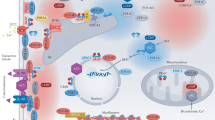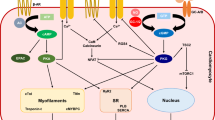Abstract
PDE3 cyclic nucleotide phosphodiesterase inhibitors raise cAMP and cGMP content in cardiac and vascular myocytes. Their administration to patients with dilated cardiomyopathy leads to improvements in hemodynamic parameters in the short term but reduces survival with chronic administration. The reasons for this 'biphasic' response have not been elucidated, but it is likely that beneficial and harmful effects of PDE3 inhibition reflect the phosphorylation of different substrates of cAMP- and cGMP-dependent protein kinases (PK-A and PK-G). It is now apparent that cardiac and vascular myocytes contain several isoforms of PDE3 that differ in their intracellular distribution and thus regulate cAMP and cGMP levels in different subcellular compartments. These isoforms also differ in their regulation by extracellular signals that may be important in the pathophysiology of dilated cardiomyopathy. An intriguing possibility is that the beneficial and harmful effects of PDE3 inhibition may be attributable to the inhibition of different isoforms of these enzymes.
Similar content being viewed by others
Author information
Authors and Affiliations
Rights and permissions
About this article
Cite this article
Movsesian, M. PDE3 cyclic nucleotide phosphodiesterases and the compartmentation of cyclic nucleotide-mediated signalling in cardiac myocytes. Basic Res Cardiol 97 (Suppl 1), I83–I90 (2002). https://doi.org/10.1007/s003950200035
Issue Date:
DOI: https://doi.org/10.1007/s003950200035




